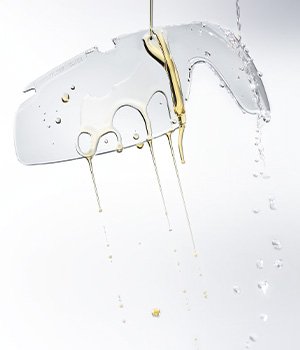Choosing the right lens coatings for protective eyewear in different circumstances
Selecting the appropriate safety eyewear lens coatings for the job can be a seemingly complex and confusing issue, requiring a PPE manufacturer with specialist knowledge and a safety manager or eyewear buyer who knows what to look for. However, by following some simple rules, this process can be made straightforward.
Advantages of lens coatings
Using improved technology and manufacturing methods, safety eyewear lens coatings are now produced for almost any application. Hi-tech, permanent, lens coatings bring a host of benefits to the wearer. They not only improve vision indoors or outdoors, but they also protect against fogging, UVB/UVA and infrared radiation, scratching, chemicals, glare, dust, sparks and static electricity. In addition, the coatings keep the lenses of the eyewear freer from contamination and cleaner for longer, making dust, aqueous and oily marks easy to remove and increasing the lifespan of the eyewear.
However, coatings must be appropriate to the task in hand. If unsuitable lens coatings are used, unwanted consequences such as eye irritation, lack of compliance and confidence in PPE, low worker morale, and subsequently reduced efficiency. Obviously, a happy workforce makes for good productivity.
Types of safety eyewear
The suitability of safety eyewear varies with the job and the industry. Wrap-around safety glasses are very effective for protecting eyes from mechanical risks such as flying wood or metal particles in a workshop, for example. Safety prescription eyewear which is made to the wearers’ individual prescription eliminates the need for overspecs thus enhancing comfort.
Safety goggles also provide impact protection, but fit more tightly around the eyes so they provide a greater degree of protection from all angles. They are ideal for protection from chemical splash, for example, and are most effective if they have anti-fog coatings, to compensate for the lack of air flow within them. Many designs also fit over prescription eyewear giving the required protection level or special prescription inserts further enhance comfort for frequent users.
Types of lens coating
Certain lens coatings are appropriate and effective for some jobs, but not for others. For example coated lenses that are permanently anti-fog on both sides, scratch resistant and antistatic are particularly suitable for work in high humidity or polluted circumstances, while extreme coatings which separate anti-fog and scratch resistant lens coatings allowing them to perform at a much higher level and on the side of the lens where the coating is needed most, are ideal for work in tough and dirty environments.
In welding, a grey-tint welding filter lens, as well as providing 100% ultraviolet and infrared protection and glare reduction, also gives perfect natural colour recognition, unlike traditional green-tinted welding lenses, which can alter colours. Correct colour vision is vital in welding tasks where safety can depend on the accurate recognition of colours in safety signs and signals in environments such as foundries, steelworks, aerospace or engineering. Coatings can also minimise the impact of sparks on the lens during welding.
In workplace settings with a high risk of small particles, dirt and dust flying around, such as in steel making, mining or construction, highly scratch-resistant coatings are a must, preferably on both sides of the spectacle or goggle. In working situations such as in paper, food, textiles and refrigerated warehouses with high humidity levels and persistent condensation, permanent, hydrophilic fog-resistant coatings are essential for safe and non-interrupted effective working.
In the past, anti-fog coatings used to wear or wash off quickly, so their permanence is a big step forward in increasing performance and life span of a product even after repeated cleaning. The modern hydrophilic coating becomes sponge-like, absorbing moisture without becoming saturated, so that the wearer does not have to take off their spectacles or goggles to clear any fog, enhancing both safety and wearer compliance.
Chemical- and biological-resistant coatings are needed for whenever chemicals are worked with, especially in medicine, food and waste management. They are also needed to protect against hazardous liquids, toxic dust, gas and vapours. In jobs that require frequent change from indoor to outdoor environments, variomatic coatings that automatically darken when the worker is outside are a big advantage or a 20% silver mirror sun tint lens allows workers to see in both light environments.
Different lens coatings can also be used for highly specialised laser applications, such as in medical, dental and industrial situations.
Selecting the right lens coating
So how can eyewear procurers decide on the perfect lens coating for the job in hand and the relevant working conditions? Good manufacturers can assist companies in selecting the proper eyewear and lens coatings for specific work environments. However, it should not be a difficult or daunting task and it is, in fact, very easy to make the right choice using a foolproof coatings selection system, which caters for most working conditions and industries.
The most efficient way to do this is to use a ‘spider graph’ selection chart. With this method, it is easy to plot and opt for the right coating for the right job, so eliminating wasteful trial and error, saving time and costs, and increasing efficiency.
The method is straightforward. The workplace conditions in terms of temperature (hot, cold) are entered on the horizontal axis of the chart, the air humidity (dry, wet) is described on the diagonal axis, and the degree of dirt (dirty, clean) specified on the vertical axis. When these three points are joined to form a triangle, the largest area will indicate the appropriate lens coating for the defined area of use. A set amount of choices is available to cover most working conditions, so making the selection of the right lens coating for a particularly function very simple.
Conclusion
Selecting the right eyewear and appropriate lens coatings is not difficult, and gives the best chance of user compliance, leading to a safer workplace, fewer eye injuries and increased productivity.
About uvex group
The uvex group brings together three globally active companies under one roof: the uvex safety group, the uvex sports group (with uvex sports and Alpina Sports), and Filtral. The uvex group is represented in 22 countries by 48 subsidiaries but chooses to do most of its manufacturing in Germany and Europe. Two thirds of the company’s 2.600-strong workforce (as at FY 2016/2017) is employed in Germany. uvex is a global partner to international elite sport and equips a host of top athletes. The motto protecting people is at the heart of the company’s activities. uvex group develops, manufactures and distributes products and services for the safety and protection of people at work, in sport and for leisure pursuits.
Sign up to our newsletter to receive information about our latest products, services and other interesting highlights
Sign up now









